CAUV farmland tax rate FAQs
Ohio Farm Bureau is continuing to work multiple channels to address concerns around CAUV – particularly the issue of values spiking significantly.
Read MorePeople are rightfully worried about the impact these valuations will have on their property tax bills. In response to these concerns, there is a pressing need to advocate for a solution that can alleviate the burden on both residential and agricultural property owners.
It’s a significant year for us, as Ashtabula County residents are receiving updated property tax assessments. However, while this process is routine, this year’s assessments are causing quite a stir due to the unexpected spikes in property valuations. Many of us are left wondering how this will impact our property tax bills and the bottom line for our farms and businesses.
The CAUV and Property Tax Challenge
The recent surge in property valuations has prompted concern among residents in 41 Ohio counties. People are rightfully worried about the impact these valuations will have on their property tax bills. In response to these concerns, there is a pressing need to advocate for a solution that can alleviate the burden on both residential and agricultural property owners.
Understanding CAUV Value Increases
One might wonder why CAUV values are on the rise. The primary factor behind these increases is the sustained high prices of agricultural commodities over the last several years. CAUV values are closely tied to the farm economy, and the formula considers net income as a critical factor in the formula. Although production costs have also risen, they have done so relatively slowly compared to the rapid increase in crop prices. Consequently, CAUV values have been on an upward trajectory. For example, in 2011, CAUV values started to surge when the highest corn price in the formula was $3.95 per bushel. Today, even the lowest corn price in the formula is $3.61 per bushel, with the highest reaching $6.45 per bushel.
The 2017 Reform: A Step in the Right Direction
It’s worth noting that the 2017 reform primarily addressed non-agricultural factors that were affecting the CAUV formula at the time. These factors were linked to the capitalization rate, a crucial component in the formula. The capitalization rate is essentially a measure of a good investment, and lower capitalization rates typically mean that the property’s value is higher. Previously when calculating the capitalization rate, the formula took into account interest rates that were wholly unrelated to the farm economy. Those interest rates, particularly in the wake of the 2008 recession, created a significant impact to the CAUV formula through the capitalization rate. This outsized impact of the capitalization rate did not allow the formula to appropriately respond to the drops in crop prices that occurred during that time frame. Those issues were addressed with reform, and the capitalization rate has stayed fairly consistent since that time.
CAUV’s Ongoing Savings
Despite the recent increases in CAUV values, the program still offers substantial savings to most farmers on their property tax bills. Even at its peak in 2014, CAUV values were, on average, approximately 50% of the actual market value, translating to significant property tax savings. To put this in perspective, consider the CAUV soil value for Miami Silt Loam, the most prevalent soil in the state, in 2023, which is set at $2,340 per acre. Compare this to the average USDA value of farm ground in Ohio currently exceeds $7,000 per acre.
Ohio Farm Bureau’s Ongoing Efforts
The Ohio Farm Bureau continues to work diligently to address concerns surrounding CAUV, particularly the sharp increases in property values. We recognize that constitutional limitations may require broader property tax reforms to comprehensively address this issue. Our organization has actively engaged with the Tax Department to ensure ongoing scrutiny and improvements to the formula. Furthermore, the creation of a Joint Committee in the 2023 state budget to review property taxation provides an opportunity for the Ohio Farm
Bureau to advocate for its members’ policies related to CAUV and property tax reform.
Taking Action
While the Ohio Farm Bureau continues to work tirelessly for its members, personal stories remain a powerful tool for change. We have issued an action alert, allowing individuals to voice their concerns and share their stories about the impact of rising property taxes. By taking action today, residents can contribute to securing support for a short-term solution to mitigate the effects of the steep property tax increases in Ohio.
In conclusion, the CAUV and property tax issues in Ohio are complex and multifaceted. While short-term solutions are essential, the Ohio Farm Bureau is also diligently working toward long-term reforms to ensure a fair and sustainable property tax system for all residents and property owners in the state. Your voice and support can make a difference in shaping the future of property taxes in Ohio.
Farm Bureau has issued an action alert which can be found by visiting here. The process is simple and has wording included – but it also allows you to add your own personal story about the impacts increasing property taxes will have on you, your farm, and your business. Your voice is critical to ensuring our collective voice is heard.
Submitted by Mandy Orahood, Ohio Farm Bureau Organization Director, serving Ashtabula, Geauga, Lake and Trumbull County Farm Bureaus.
OFBF Mission: Working together for Ohio farmers to advance agriculture and strengthen our communities.
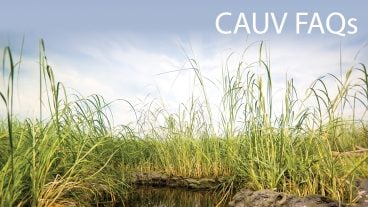
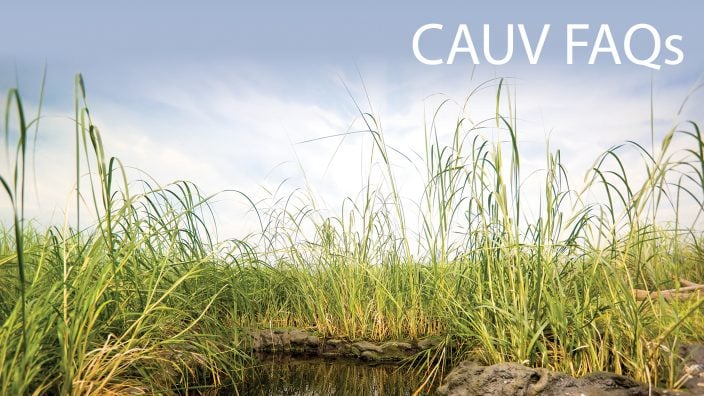
Ohio Farm Bureau is continuing to work multiple channels to address concerns around CAUV – particularly the issue of values spiking significantly.
Read More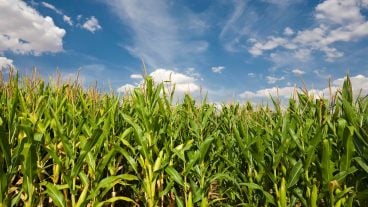

An upward trend in CAUV values and significant increases in soil values for 2024 apply only to counties that are being reappraised or updated in 2024.
Read More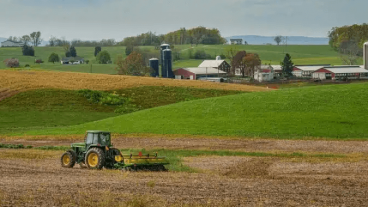

The July/August 2024 Our Ohio magazine takes a deeper dive into a program that impacts nearly all members across the state, CAUV.
Read More

As Ohio Farm Bureau Policy Counsel Leah Curtis notes in this Legal with Leah, these changes should result in significant tax savings for many Ohio woodland owners.
Read More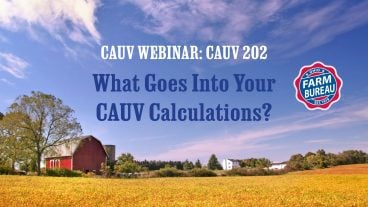
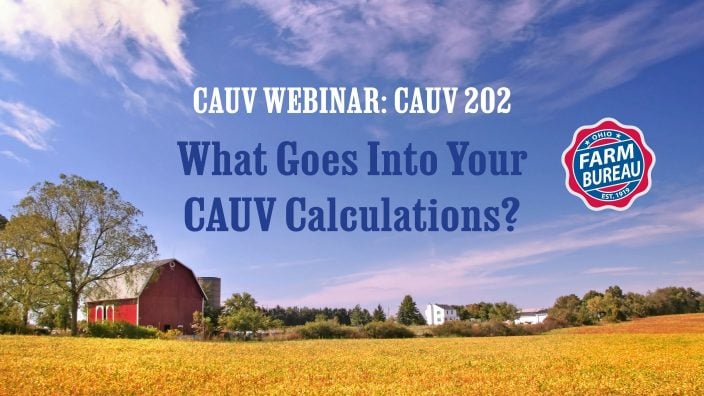
CAUV 202 took a deeper dive into how tax bills are formulated and what exactly goes into the Current Agricultural Use Value numbers.
Read More

After years of advocacy from Ohio Farm Bureau and its partners, the Ohio Department of Taxation announced today that it will address inaccurate woodland calculations in the Current Agricultural Use Value program.
Read More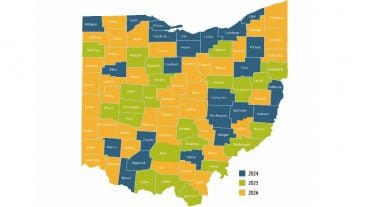
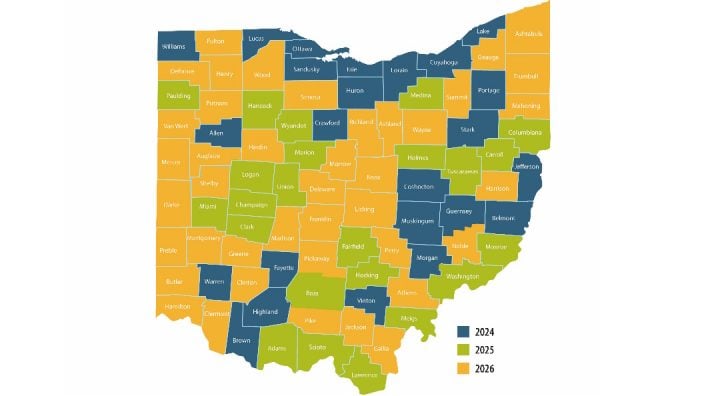
Taking a look at the history of CAUV can help with understanding its structure, fluidity and the eternal vigilance needed by Ohio Farm Bureau and our members for its sustainability.
Read More
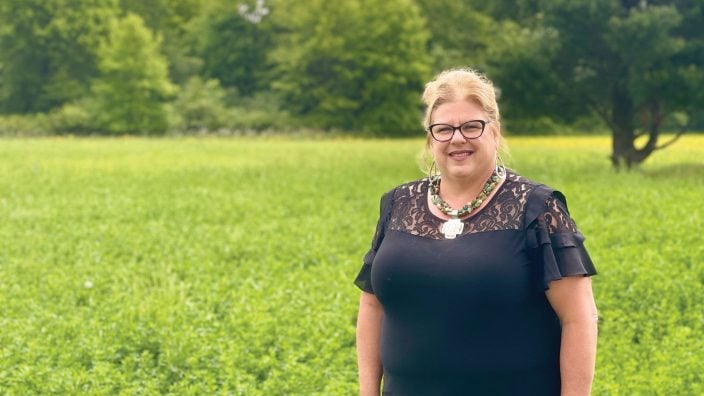
Kelly Tennant’s story starts as many others in agriculture do, but her current day job impacts Ohio ag more than most.
Read More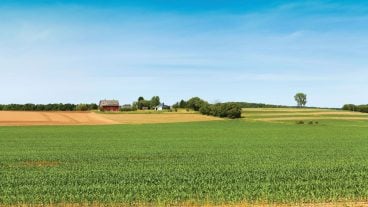
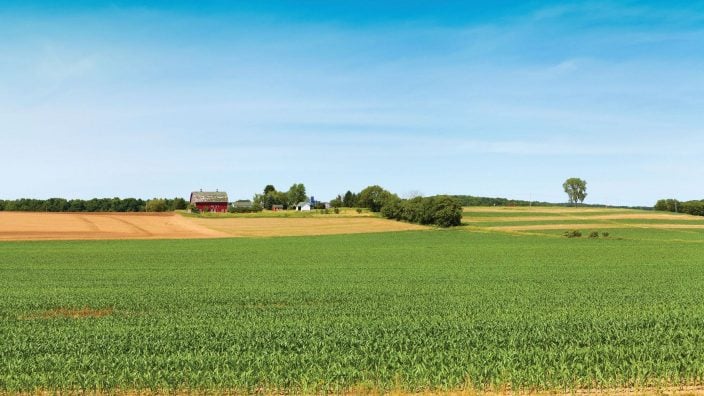
Learn more about eligibility and how to include conservation practices on CAUV enrollment forms.
Read More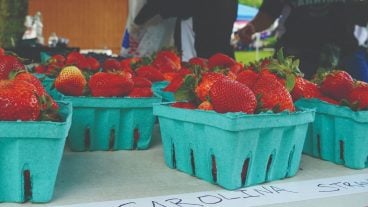
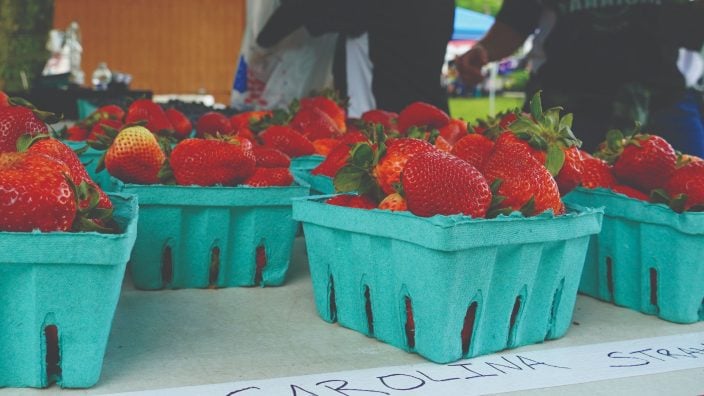
Bob and Polly Givens are on a mission to inform small landowners-homesteaders of the advantages of CAUV.
Read More